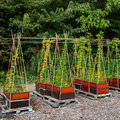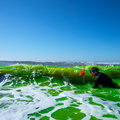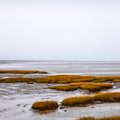News
10 February 2020
Up in the clouds

They are a beautiful sight, those cumulus clouds drifting by slowly high above our heads. But what is propelling them? And how do they affect the wind? To find out Louise Nuijens spent a few days with her head in the clouds. Literally.
06 February 2020
Roots for riverbanks

The Netherlands has had an indissoluble relationship with water throughout history. Nowadays, 2400 km of waterways flowing through its veins use timber retaining walls along their banks. A more eco-friendly solution than brick or concrete but, still, not as sustainable as it could be. Civil Engineer Abhijith Kamath is researching an alternative method to use tree roots to strengthen waterways’ banks. Making Dutch channels greener in every way.
05 February 2020
The breathing of dikes

When looking at a dike, you wouldn’t be able to detect any motion in this robust structure. Though in fact there is. On a millimetre level, dikes expand and shrink in relation to the weather conditions. Ece Özer showed that observing this ‘breathing’ of dikes could help prevent catastrophic flooding events. She used this feature to create an innovative model based on satellite data to better detect weaknesses in a dike.
04 February 2020
Not a band-aid but a feeder solution for our coasts

At the weekend Matthieu de Schipper likes to surf the waves but on weekdays he studies how they transport the sand along the coast and up and down beaches. ‘Sea level rise is a threat to coasts across the globe. I want to use the forces of nature to provide engineering solutions to this problem on a global scale’. At the Sand Motor project in the Netherlands De Schipper is training students to do the necessary fieldwork. In all weathers.
01 February 2020
What the Wadden can teach us

Intertidal zones are crucial for the protection of our coast and as stop-overs for migrating birds. But, increasingly, many of these sand and mudflats are disappearing permanently underneath the waves. Cynthia Maan investigated how by cooperating with nature and using a systems-based approach these precious resources can be saved.